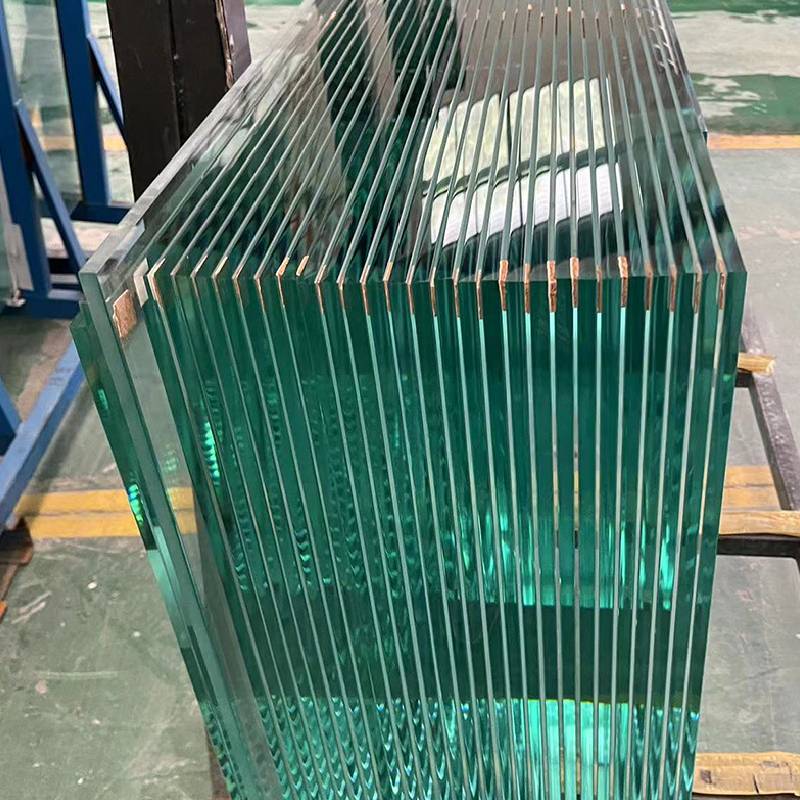Float glass, also known as flat glass, plays a pivotal role in various industries, including construction, automotive, and solar energy. The process of producing float glass is both intricate and fascinating, requiring precision and expertise. This meticulous process not only ensures high-quality glass but also involves a range of innovative techniques that underscore the blend of science and art.

The journey of float glass production begins with the careful selection of raw materials, primarily sand, soda ash, and limestone. These components are essential for forming the glass batch. The preparation of these raw materials involves rigorous quality checks to ensure the final product meets the necessary quality and strength standards. The expertise required in determining the perfect ratios demonstrates the foundational skill in this endeavor.
Once the batch is ready, it undergoes melting in a large furnace at temperatures soaring above 1700°C. This step is critical as the extreme heat transforms the raw ingredients into molten glass. The control and management of this phase demand experience, given the need to maintain consistent temperature and composition throughout the melting process, preventing any flaws or inconsistencies in the glass.

The molten glass is then carefully poured onto a bed of molten tin in a controlled environment, a marvel of engineering that characterizes the float glass process. The glass floats on the tin, spreading out to form a smooth and even surface, a testament to the precision involved in this stage. The attention to detail and the artistry in controlling the thickness and width of the glass ensure a flawless output, showcasing industry expertise.
This floating phase is followed by controlled cooling, known as annealing, which is pivotal for relieving any internal stresses within the glass. This stage demands meticulous control and authoritative understanding of thermal dynamics to ensure that the glass does not crack or warp. Professionals in this domain leverage their deep knowledge to fine-tune this phase, which directly impacts the durability and quality of the glass.
float glass production process
Safety and quality compliance are paramount throughout the float glass production process. Rigorous testing and quality assurance measures are in place to certify the glass meets industry standards. Trust is built through these protocols, emphasizing the reliability and credibility of the manufacturers involved in the process.
The expertise required in float glass production is further extended with additional processes such as cutting, coating, and tempering, depending on the specific applications of the glass. Each of these processes demands a tailored approach, highlighting the versatility and authoritative knowledge within the industry.
Finally, sustainability is becoming increasingly integral to the float glass production process. Innovations in energy efficiency and recycling of glass cullet in the manufacturing cycle not only reduce environmental impact but also demonstrate the industry’s commitment to sustainable practices. This evolution reflects an experience-driven shift towards greener production methods, aligning with global environmental goals.
In conclusion, the float glass production process is a sophisticated balance of expertise, experience, and authoritative knowledge. From raw material preparation to final product evaluation, each stage is meticulously managed to produce high-quality glass that meets diverse industrial needs. The dedication to quality, innovation, and sustainability positions the float glass manufacturing industry as both a leader and a trusted partner in modern industrial applications.
 Afrikaans
Afrikaans  Albanian
Albanian  Amharic
Amharic  Arabic
Arabic  Armenian
Armenian  Azerbaijani
Azerbaijani  Basque
Basque  Belarusian
Belarusian  Bengali
Bengali  Bosnian
Bosnian  Bulgarian
Bulgarian  Catalan
Catalan  Cebuano
Cebuano  Corsican
Corsican  Croatian
Croatian  Czech
Czech  Danish
Danish  Dutch
Dutch  English
English  Esperanto
Esperanto  Estonian
Estonian  Finnish
Finnish  French
French  Frisian
Frisian  Galician
Galician  Georgian
Georgian  German
German  Greek
Greek  Gujarati
Gujarati  Haitian Creole
Haitian Creole  hausa
hausa  hawaiian
hawaiian  Hebrew
Hebrew  Hindi
Hindi  Miao
Miao  Hungarian
Hungarian  Icelandic
Icelandic  igbo
igbo  Indonesian
Indonesian  irish
irish  Italian
Italian  Japanese
Japanese  Javanese
Javanese  Kannada
Kannada  kazakh
kazakh  Khmer
Khmer  Rwandese
Rwandese  Korean
Korean  Kurdish
Kurdish  Kyrgyz
Kyrgyz  Lao
Lao  Latin
Latin  Latvian
Latvian  Lithuanian
Lithuanian  Luxembourgish
Luxembourgish  Macedonian
Macedonian  Malgashi
Malgashi  Malay
Malay  Malayalam
Malayalam  Maltese
Maltese  Maori
Maori  Marathi
Marathi  Mongolian
Mongolian  Myanmar
Myanmar  Nepali
Nepali  Norwegian
Norwegian  Norwegian
Norwegian  Occitan
Occitan  Pashto
Pashto  Persian
Persian  Polish
Polish  Portuguese
Portuguese  Punjabi
Punjabi  Romanian
Romanian  Russian
Russian  Samoan
Samoan  Scottish Gaelic
Scottish Gaelic  Serbian
Serbian  Sesotho
Sesotho  Shona
Shona  Sindhi
Sindhi  Sinhala
Sinhala  Slovak
Slovak  Slovenian
Slovenian  Somali
Somali  Spanish
Spanish  Sundanese
Sundanese  Swahili
Swahili  Swedish
Swedish  Tagalog
Tagalog  Tajik
Tajik  Tamil
Tamil  Tatar
Tatar  Telugu
Telugu  Thai
Thai  Turkish
Turkish  Turkmen
Turkmen  Ukrainian
Ukrainian  Urdu
Urdu  Uighur
Uighur  Uzbek
Uzbek  Vietnamese
Vietnamese  Welsh
Welsh  Bantu
Bantu  Yiddish
Yiddish  Yoruba
Yoruba  Zulu
Zulu 


